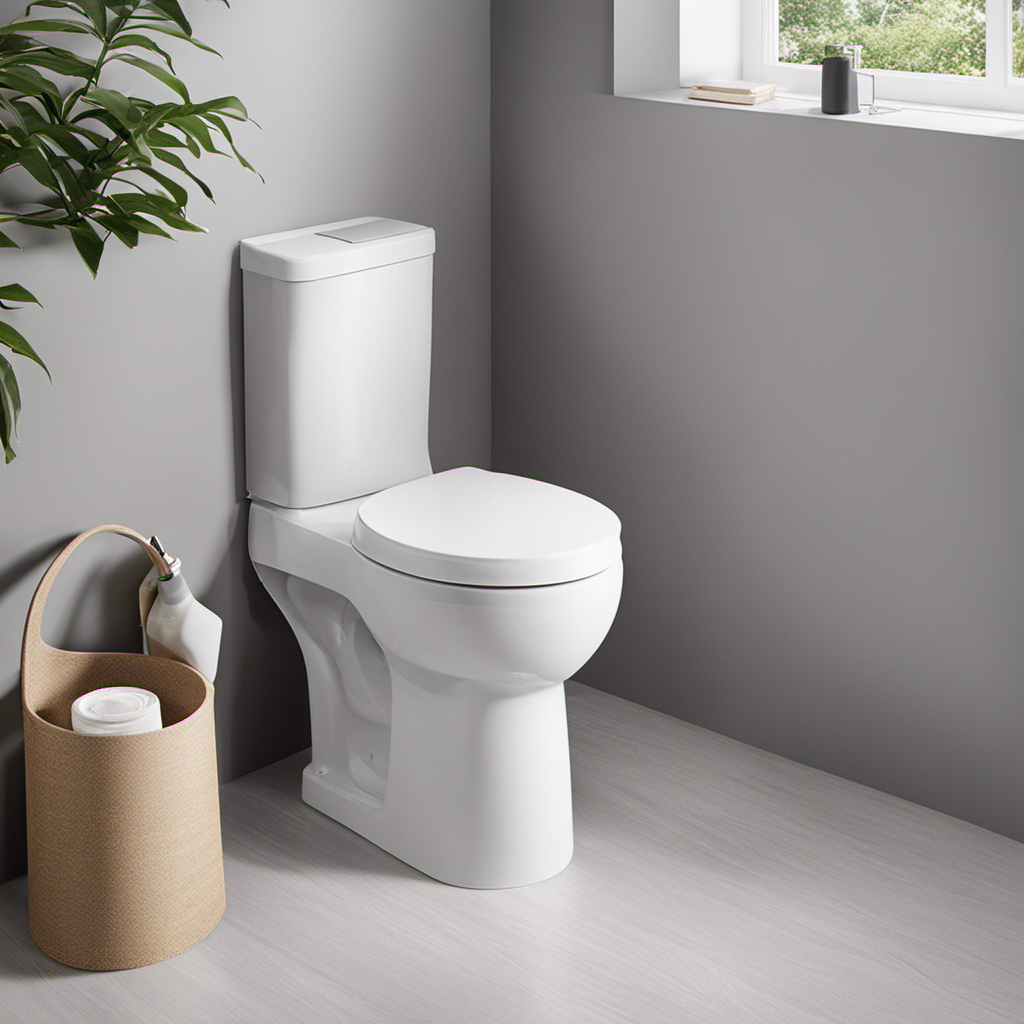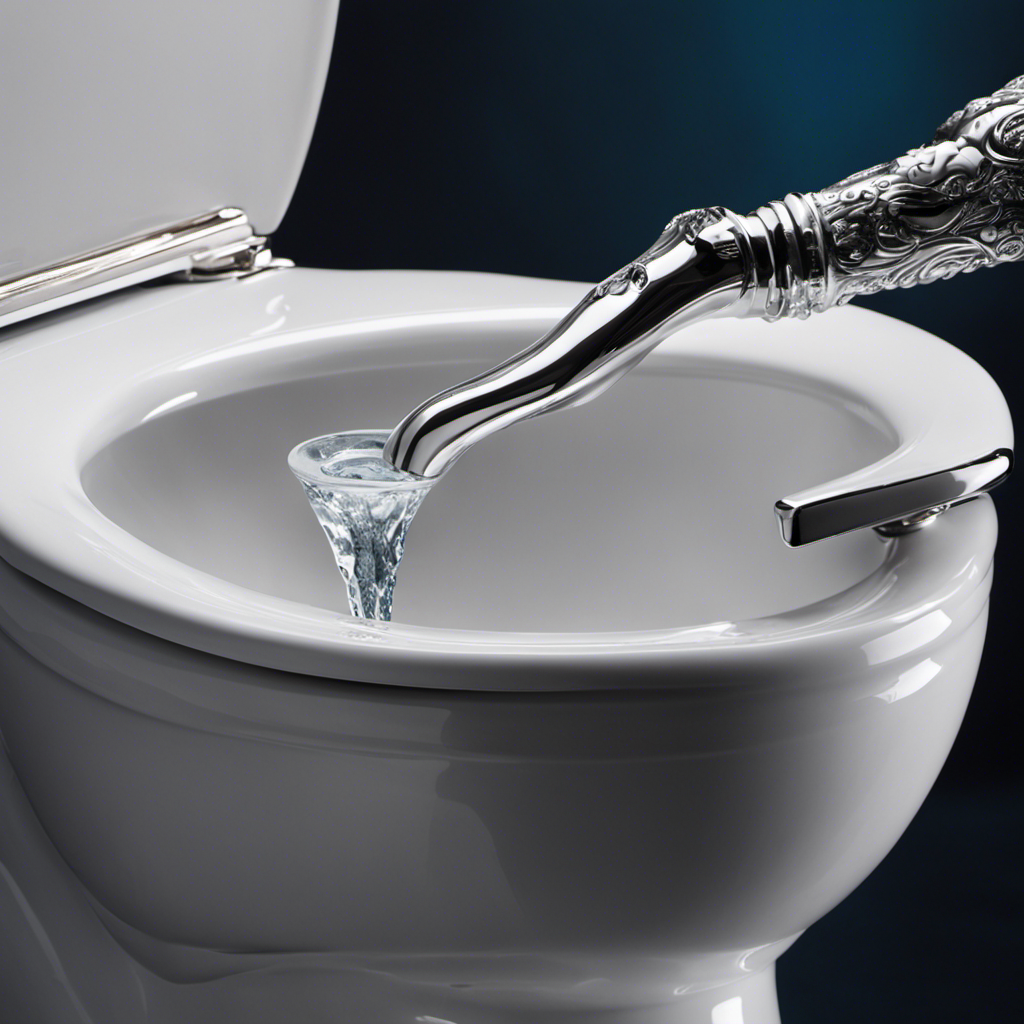Did you know that the average person spends about 10 minutes on the toilet each day?
But have you ever wondered if that’s too long or not long enough?
In this article, I’ll share valuable insights and expert advice on how long you should sit on the toilet.
We’ll explore the health risks of prolonged toilet sitting, factors to consider for optimal toilet time, and tips for efficient toilet use.
So, let’s dive in and find the perfect balance for your bathroom routine.
Key Takeaways
- Prolonged toilet sitting can increase the risk of developing hemorrhoids.
- Spending excessive time on the toilet can disrupt the natural rhythm of the digestive system.
- Adopting a squatting posture or using a footstool can promote healthier bowel movements.
- Persistent changes in bathroom habits or physical discomfort during bowel movements may require medical advice.
The Health Risks of Prolonged Toilet Sitting
You should be aware of the health risks of sitting on the toilet for too long. Prolonged toilet sitting can increase the risk of developing hemorrhoids. When you sit for an extended period, the pressure on your rectum and anus increases, causing the blood vessels to swell and potentially leading to hemorrhoids.
Additionally, spending excessive time on the toilet can negatively impact your bowel movements. It can disrupt the natural rhythm of your digestive system, making it harder for your body to eliminate waste effectively. This can result in constipation or even bowel disorders over time.
Understanding these risks is crucial for maintaining good bowel health. Now, let’s delve into the factors to consider for optimal toilet time.
Factors to Consider for Optimal Toilet Time
One factor to consider for optimal toilet time is the comfort of the seating arrangement. When we are relaxed and comfortable, our bodies are better able to perform their natural functions.
Additionally, the posture we adopt on the toilet can greatly affect our bowel movements. Research suggests that squatting or using a footstool to elevate the feet can promote healthier bowel movements and reduce the risk of constipation.
It is also important to incorporate relaxation techniques during toilet time. Deep breathing exercises, meditation, or simply taking a moment to unwind can help the body relax and promote efficient elimination.
By creating a comfortable environment and adopting the proper posture, we can optimize our toilet time for healthier bowel movements.
Now, let’s explore the ideal duration on the toilet.
Finding the Balance: Ideal Duration on the Toilet
When finding the balance, it’s important to remember that spending excessive time on the toilet may lead to straining and potential health issues. It’s crucial to maintain a comfortable toilet posture to maximize comfort and minimize any potential discomfort or strain.
The way you sit on the toilet can make a significant difference in your overall experience. By adopting a relaxed and natural position, such as using a squatting posture or utilizing a toilet stool, you can help reduce the risk of straining and promote proper bowel movements.
Additionally, taking mindful toilet breaks can provide an opportunity for self-reflection and relaxation. It’s important to find a balance between efficient toilet use and allowing yourself the time for self-care and relaxation.
Transitioning into the subsequent section, here are some tips for efficient toilet use to help you make the most of your bathroom breaks.
Tips for Efficient Toilet Use
To maximize efficiency when using the toilet, it’s important to follow these tips. One of the key factors is maintaining the correct toilet posture. Sitting with your feet flat on the ground and knees slightly higher than your hips can help facilitate better bowel movements. Additionally, practicing good hygiene maintenance is crucial. Make sure to clean the toilet seat before and after use, and always wash your hands thoroughly afterwards. To engage the audience further, here is a table summarizing the tips for efficient toilet use:
| Tips for Efficient Toilet Use |
|---|
| Maintain correct toilet posture |
| Clean the toilet seat before and after use |
| Wash your hands thoroughly afterwards |
When to Seek Medical Advice for Toilet Habits
If you are experiencing persistent changes in your bathroom habits, it may be worth seeking medical advice. While occasional variations in toilet habits are normal, certain signs may indicate potential health issues that require attention.
Here are a few signs that you should consult a doctor regarding your toilet habits:
-
Physical discomfort: If you experience pain, cramps, or discomfort during bowel movements, it may indicate an underlying problem such as hemorrhoids or irritable bowel syndrome.
-
Changes in stool appearance: Any sudden changes in the color, consistency, or shape of your stool could be a sign of digestive issues or infections.
-
Frequent constipation or diarrhea: If you consistently struggle with either constipation or diarrhea, it may be an indication of an underlying condition that needs medical attention.
-
Blood in the stool: The presence of blood in your stool should never be ignored as it may indicate serious conditions like colon cancer or hemorrhoids.
Frequently Asked Questions
Can Sitting on the Toilet for Too Long Cause Hemorrhoids?
Sitting on the toilet for too long can indeed cause hemorrhoids. Prolonged toilet sitting puts pressure on the rectum, leading to rectal pain and potentially causing anal fissures. It’s important to limit your time on the toilet to prevent these issues.
Does Prolonged Toilet Sitting Contribute to Urinary Tract Infections?
Prolonged toilet sitting can have a negative impact on bladder health. It increases the risk of urinary tract infections. Proper toilet hygiene, including not sitting for too long, is crucial for maintaining a healthy bladder.
Is It Normal to Experience Leg Numbness or Tingling After Sitting on the Toilet for a While?
Sitting on the toilet for a while can cause leg numbness or tingling. It’s like pins and needles shooting through your legs. Adjusting your toilet posture and not sitting too long can help prevent this discomfort.
Can Sitting on the Toilet for Extended Periods of Time Lead to Constipation?
Sitting on the toilet for extended periods can lead to constipation. Proper toilet posture, like squatting, can help prevent this. It’s important to be mindful of our time spent on the toilet for optimal bowel movements.
Are There Any Long-Term Effects on Bowel Movements From Spending Excessive Time on the Toilet?
Spending excessive time on the toilet can have long-term effects on bowel movements. It’s important to limit your time to avoid straining and potential constipation. Take care of your health!
Conclusion
In conclusion, it’s important to be mindful of the time spent sitting on the toilet. Studies have shown that sitting for extended periods can increase the risk of hemorrhoids and bowel problems. Finding the balance between taking enough time to empty your bowels and not lingering on the toilet is crucial. Interestingly, research suggests that the ideal duration on the toilet should be no longer than 10 minutes.
Remember, efficient toilet use is key to maintaining good bathroom habits and overall well-being.










